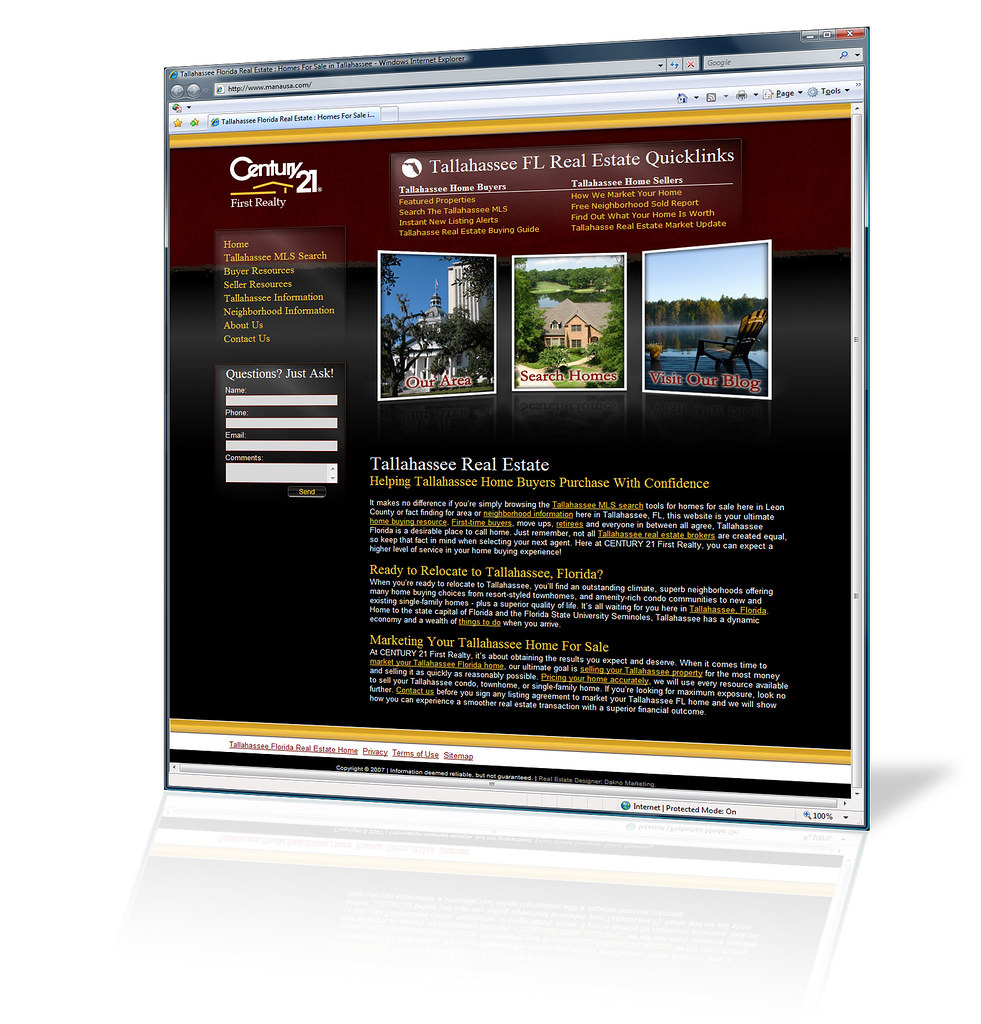
The real estate market, once a super-charged sellers’ playground, has gracefully transitioned into a more neutral territory. This shift means that while demand is still present, sellers can no longer simply list a property and expect an immediate bidding war. Instead, success now hinges on a strategic, informed approach, not just in pricing, but crucially, in how a home is presented and marketed to prospective buyers. It’s about playing the long game with smart moves.
Moving on to your next adventure, whether it’s a new city, a bigger family home, or a peaceful retirement retreat, should be as smooth and profitable as possible. To navigate this evolving landscape, we’ve gathered invaluable insights and data-backed strategies directly from the playbooks of top real estate professionals. These aren’t just tips; they’re the refined “secrets” that empower sellers to stand out, attract serious buyers, and ultimately close the deal faster and for a better price.
Ready to unlock the wisdom of seasoned experts? We’re diving deep into 15 pivotal strategies that can transform your selling experience. From maximizing your home’s reach to perfecting its presentation, these actionable insights will equip you with everything you need to confidently sell your home, regardless of market conditions. Let’s explore the first seven of these game-changing secrets that pave the way for a swift and successful sale.

1. **Maximize Your Home’s Exposure (MLS & Online Platforms)**In today’s competitive real estate environment, getting your home in front of the widest possible audience of qualified buyers is paramount. The single most effective way to achieve this is by listing your property on a Multiple Listing Service, or MLS. This powerful database is the central hub where real estate professionals share listings with each other, their clients, and critically, with major real estate sites like Zillow and Redfin. These platforms are where the vast majority of buyers begin their home search, ensuring your listing gains maximum visibility.
The data unequivocally supports the power of the MLS. Research has consistently found that homes listed on the MLS sell for significantly more than those confined to private networks, often referred to as “pocket listings” or “private listings.” For instance, one study revealed that homes listed on the MLS fetched 17.5% more than their privately listed counterparts. This translates into a substantial financial advantage, with a typical seller in 2022 gaining an additional $53,000 by opting for an MLS listing. It’s a clear indicator that wider exposure directly correlates with higher offers.
Conversely, relying solely on private listings, which are only accessible to a select group of agents or brokers, often proves to be a less effective strategy. While they might be marketed for increased privacy or to test a price point, private listings frequently extend the time it takes to sell a home. A 2022 study by Bright MLS highlighted this, showing that a staggering 63% of homes initially listed privately eventually had to be listed on the MLS to find a buyer. This demonstrates that for both speed and profit, broad exposure through the MLS is a non-negotiable step for serious sellers.

2. **Partner with a Proactive and Trustworthy Agent**When embarking on the journey of selling your home, the choice of a real estate agent is arguably one of the most critical decisions you’ll make. An experienced, proactive, and trustworthy agent acts as your invaluable guide through every intricate step of the process. They bring to the table deep expertise in local market conditions, ensuring your home is impeccably prepared, priced competitively, and marketed with precision to attract the right buyers. Their counsel extends from developing an optimal timeline to identifying crucial repairs or improvements that will expedite your sale.
A truly exceptional agent will go beyond mere listing, actively championing your property and strategically positioning it in the market. As one Zillow study revealed, a remarkable 52% of Americans consider their agent’s ability to put their home in front of the largest pool of interested buyers is among the most important factors when choosing an agent. This proactive approach, combined with their knowledge of local market dynamics, ensures that your listing reaches its full potential, maximizing both interest and offers. Their network and access to platforms like the MLS are crucial for broad reach.
To secure such a partner, the hiring process should be thorough. Interview several candidates, delve into their reviews and references, and crucially, ask them to outline their specific plans for pricing, marketing, and selling your unique property. Insist on a clear articulation of their strategy, and ensure any agreement explicitly includes listing your home as widely as possible, including on prominent sites like Zillow. This diligence guarantees you’re partnering with an agent who is not only skilled but also fully committed to achieving the maximum sales price for your home.
As Alec Cantley, a real estate agent and global real estate advisor with Premier Sotheby’s International Realty, aptly puts it, “A lot of what may seem like little odds and ends that go into getting a house ready for the market comes from experience.” This sentiment underscores the value of an agent’s seasoned perspective, helping you navigate the myriad details that collectively prepare your home for a successful sale, ensuring no stone is left unturned in making your property shine.
Read more about: Your New Secret Weapon: 10 AI Tools That Deliver 20+ Hours Back to Your Week

3. **Strategic Timing: List Your Home in Spring**Timing, they say, is everything, and in real estate, this adage holds particularly true. While local market conditions can introduce nuances, a national trend consistently points to late spring, specifically the last two weeks of May, as the prime window to list your home for maximum profit. Zillow data provides compelling evidence for this, indicating that spring is generally the best time across the nation. This period aligns perfectly with school breaks, allowing families to relocate with minimal disruption and drawing a larger pool of active buyers into the market.
The financial benefits of strategic timing are significant. Zillow data highlights that homes listed in the latter half of May have historically sold for 1.6% more nationally. On a typical U.S. home, this translates to a substantial boost of approximately $5,600. This added value is a direct reflection of heightened buyer activity and increased competition during this desirable selling season. Capitalizing on these seasonal fluctuations can provide a meaningful edge to your listing.
It’s important to acknowledge that while national trends offer a strong guideline, local markets can have their own unique rhythms. For instance, the optimal listing time might shift to as early as the second half of March in a vibrant market like San Jose, or extend as late as the second half of July in a different climate like Miami, Florida. This is where the local expertise of your chosen real estate agent becomes indispensable. An experienced professional can meticulously analyze current buyer trends and data in your specific area, helping you pinpoint the absolute best moment to introduce your home to the market, aligning with local nuances for peak interest and value.
Read more about: Beyond the Odometer: 15 Legendary Engines That Defy Time, Powering On Strong Past 200,000 Miles and into Automotive Immortality

4. **Boost Online Screen Appeal with Professional Media**In an era where home shopping overwhelmingly begins online, your property’s “screen appeal” is just as vital as its physical curb appeal. The initial digital impression can make or break a buyer’s decision to even consider an in-person viewing. Zillow research underscores this, revealing that modern buyers expect to extensively experience a home online before committing to a physical visit. They are willing to pay more for listings that offer a comprehensive media package, demonstrating the tangible value of a strong digital presentation.
The investment in high-quality visual assets pays dividends. Zillow Showcase listings, which prominently feature high-resolution images, immersive 3D home virtual tours, and detailed interactive floor plans, consistently sell for 2% more than comparable homes lacking such a complete package. For a typical U.S. home, this translates to an impressive premium of around $9,000. These sophisticated visual tools allow potential buyers to virtually walk through your space, gain a true sense of its layout and flow, and emotionally connect with the property long before stepping foot inside.
Hiring a professional photographer is no longer a luxury but a necessity. As Benjamin Dixon, a licensed associate real estate broker, emphasizes, “(Amateur) photos just don’t really cut it anymore, you need professional photography, a floor plan, video and virtual photography.” Professional photographers possess the expertise to capture each room at its best angle, highlighting key features and maximizing natural light. Their keen eye ensures that your home is presented in the most flattering and realistic light possible, compelling buyers to take the next step.
The advent of 3D tours, particularly gaining traction post-COVID-19, has become an industry standard. These tours provide an unparalleled sense of immersion, allowing buyers to make “sight unseen purchases” as Alec Cantley notes, by understanding a property without a physical visit. However, this level of transparency also means your home must be in pristine condition. A 3D tour will expose flaws that might be hidden in static photos, so meticulous preparation is crucial before any virtual walkthrough is filmed. Discussing these advanced media options with your agent is key to developing a robust marketing plan that truly showcases your home.
Read more about: Mastering Virtual Presence: 12 Subtle Zoom Meeting Mistakes That Undermine Your Professional Image

5. **Enhance Curb Appeal for a Strong First Impression**Long before a potential buyer steps through your front door, or even before they click on your online listing, your home’s exterior makes its first crucial impression. This “curb appeal” is the silent salesperson, communicating volumes about the care and maintenance of your property. Whether viewed online or in person, an inviting and well-maintained exterior instantly signals a home that has been cherished, while a neglected or cluttered appearance can prematurely deter interested parties. It’s essential to adopt a buyer’s perspective and critically assess your home from the street, seeing it with fresh eyes.
Transforming your home’s curb appeal doesn’t require a major overhaul; often, it’s the accumulation of small, thoughtful details that makes the biggest impact. Before any online photos are taken, or buyers arrive, meticulously hide or remove unsightly elements such as trash cans, parked cars, broken furniture, or excessive yard decor. Aggressively trim overgrown trees and shrubs, and promptly remove any dead plants that detract from the vibrancy of your landscaping. These simple acts immediately elevate the perceived value and attractiveness of your property.
Beyond decluttering, a thorough cleaning regimen can work wonders. Pressure washing your siding, walkways, and driveways can restore a fresh sparkle, instantly conveying a sense of meticulous maintenance. Consider adding vibrant window boxes filled with flowers or giving your front door a welcoming pop of color to create an inviting focal point. For a more direct impact, spruce up the entryway with new house numbers or a fresh mailbox. Even ensuring outdoor lights are on for evening drive-bys can enhance the overall impression. These efforts combine to present a home that is not just seen, but truly admired from the moment a buyer approaches.
Your real estate agent’s local market knowledge is particularly valuable when it comes to curb appeal. They are intimately familiar with what features and aesthetics resonate most with buyers in your specific area. Consulting with them can help you prioritize which exterior improvements will yield the greatest return on investment and create the most compelling first impression, ensuring your efforts are both effective and strategically aligned with buyer preferences.
Read more about: From Low-Cost to High-Impact: 12 Unexpectedly Successful Budget Flips That Defy Expectations

6. **Depersonalize and Declutter Your Living Spaces**One of the most fundamental yet often overlooked secrets to selling a home faster is allowing potential buyers to envision themselves living in the space. This means creating a neutral canvas, free from the imprints of your personal life. Highly personal touches, such as prominent family photos, unique keepsakes, or collections of memorabilia, can inadvertently prevent buyers from seeing past your family and imagining their own life unfolding within those walls. The goal is to make the home feel like a potential new beginning for them, not a visit to someone else’s sanctuary.
The process of depersonalization extends beyond photographs. It involves removing political and religious items, children’s artwork from the refrigerator, and anything that strongly marks the house as “your territory.” The same principle applies to extensive collections – figurines, sports memorabilia, or a plethora of kids’ toys can distract buyers from the home’s features, drawing their focus instead to your belongings. By replacing family photos with neutral art or removing them entirely (and repairing any nail holes), you transform the space into a blank slate, inviting buyers to project their dreams onto it.
Alongside depersonalization, aggressive decluttering is paramount. Nothing makes a home feel smaller or less inviting than excessive furniture and general clutter. Consider renting a self-storage container or a storage unit to pack away off-season clothing, rarely used kitchen gadgets, and decorative items you don’t immediately need. Clearing kitchen and bathroom countertops of appliances and personal care products creates a sense of spaciousness and order. Even scaling down the contents of closets can be beneficial, making the home’s storage capacity appear ample and appealing.
As Heather Hobrock, a real estate agent with Premier Sotheby’s International Realty, advises, “I highly recommend people go in and declutter and depersonalize.” This crucial step is about creating an environment where the architecture, flow, and potential of the home itself take center stage, rather than being overshadowed by your possessions. A clean, spacious, and neutral environment allows buyers to emotionally connect with the property, making it easier for them to envision it as their own.

7. **Stage Your Home to Showcase its Potential**Once your home is decluttered and depersonalized, the next powerful step is professional staging. While your personal style might be wonderfully unique, it might not resonate with every potential buyer, and could even make it challenging for them to see the home as a versatile, blank canvas for their own vision. Staging is the art of arranging furniture and décor in a way that highlights the layout and functionality of every room, effectively showcasing the home’s best features and overall potential. It helps buyers connect emotionally with the space.
A professionally staged home goes beyond just aesthetics; it gives purpose to every area. An awkward corner that might otherwise be overlooked could, through staging, be transformed into a charming reading nook or a functional home office. As the context states, “Every room should have a job. A storage room filled with boxes sends the wrong message. Transform that awkward space into a guest room, office, or hobby nook.” Defined spaces aid buyers in understanding the flow and versatility of your layout, making it easier for them to imagine how they would utilize each area.
The impact of staging can be dramatic, as exemplified by agents like Heather Hobrock, who recalls a home that languished on the market for five years. After being restaged with white linens and clean, simple furnishings, it almost immediately attracted multiple offers and sold above the asking price. This anecdote powerfully illustrates “the power of staging.” By presenting a cohesive, appealing, and aspirational lifestyle, staging helps buyers overcome initial hesitations and see the true value and comfort your home offers.
While some real estate agents, like Hobrock, maintain their own warehouses of furniture for staging, many others partner with third-party staging companies. Regardless of the method, the objective remains the same: to create an irresistible atmosphere. This often involves strategic touches like a few throw pillows, fresh flowers, or a potted plant to add warmth and life. The main rooms – kitchen, dining room, living room, bathrooms, and primary bedroom – are particularly crucial to stage effectively, aiming to evoke a feeling of “they are already home” for prospective buyers.
Read more about: Unlocking Dealership Gold: 15 Proven Strategies Car Dealers Use to Maximize Profit on Every Sale and Secure Their Future
8. **Consider Neutral Colors When Repainting**When you’re preparing your home for the market, a fresh coat of paint can work wonders. If you’re planning to refresh your interiors, one of the smartest choices you can make is to opt for neutral tones. Much like removing personal effects, a neutral color palette allows potential buyers to easily imagine their own style and belongings fitting seamlessly into the space. It helps them see the house as a blank canvas, ready for their personal touch.
The goal here is to create an inviting backdrop that appeals to the widest possible audience, rather than showcasing your unique preferences. As Ellen Cohen, a licensed associate real estate broker with Compass, aptly puts it, “You just want people to see the space for what it is.” This means steering clear of bold, distinctive colors such as a daughter’s purple bedroom, a quirky turquoise bathroom, or even a vibrant red accent wall. Busy wallpaper can also be a significant turn-off for prospective buyers, as it often feels too specific to the current owner’s taste.
Consider soft shades of gray, taupe, or cream for your walls. These classic choices provide a clean, modern aesthetic that complements various décor styles. In some regions, like South Florida, real estate agent Heather Hobrock notes that white is a particularly popular paint choice, often mimicking the fresh, bright look of new construction homes to attract buyers. By embracing neutral colors, you’re not just painting walls; you’re creating an atmosphere of broad appeal and understated elegance that lets your home’s features shine.
Read more about: Beyond the Shine: Unmasking the Realities of Vintage Convertible Ownership and How to Conquer Common Maintenance Headaches

9. **Invest in Improvements with Resale ROI**While it’s wise to avoid major, costly renovations that might not recoup their investment, strategically investing in certain improvements can significantly enhance your home’s appeal and even its final sales price. Sometimes, even simple DIY projects can be surprisingly effective at drawing attention to your listing. The key is to focus on updates that resonate with current buyer preferences and offer a strong return on investment (ROI).
Data consistently shows that calling out specific popular features in your listing can attract more buyer interest. For example, homes that mention window boxes in their descriptions often receive 48% more daily saves on Zillow. Similarly, popular features like open shelving can boost daily saves by 37%, and painted brick can increase them by 32%. These aren’t just vanity metrics; more daily saves, views, and shares on Zillow are powerful indicators of strong buyer demand, signaling a property that stands out from the competition.
Your real estate agent is your best resource for identifying which improvements will have the greatest impact in your specific market. They have an intimate understanding of what features buyers in your area are actively seeking. As Alec Cantley, a real estate agent and global real estate advisor, points out, “There’s often a variety of items that you can (update) as you prepare a house to come on the market. It could be as little as a couple thousand bucks, but it can have huge returns when it comes to getting into the buyer’s psyche.” Updates like cabinet or door hardware, fresh paint, or new countertops can dramatically influence how buyers perceive your home and its value, helping them envision moving in rather than immediately planning costly remodels.
Read more about: 14 Smart & Simple Ways to Upgrade Your Car’s Luxury Feel for Under $1000

10. **Price Your Listing Right**One of the most critical decisions in selling your home is setting the right price. An accurate, competitive listing price is fundamental to attracting serious buyers and achieving a swift, profitable sale. While it might be tempting to aim high, an unrealistically elevated price can cause your home to languish on the market, deterring potential buyers who are well-informed about comparable properties. In today’s market, buyers and their agents have unprecedented access to data, allowing them to gauge a home’s worth accurately before even viewing it.
A great starting point for understanding your home’s market value is Zillow’s Zestimate. This tool provides an estimated market value for your individual home, which is computed daily using millions of public and user-submitted data points. By searching your address and claiming your home, you can review and update your home facts, ensuring the Zestimate reflects the most accurate value. Adding detailed information to your listing can influence this estimate and present potential buyers with a more precise value proposition.
Beyond the initial Zestimate, your real estate agent’s expertise becomes invaluable. They can bring their deep knowledge of local market dynamics to further refine your pricing strategy. This includes showing you recently sold comparable homes in your area, providing context for current trends, and advising on how affordability, influenced by factors like mortgage interest rates, impacts buyer behavior. As Benjamin Dixon, a licensed associate real estate broker, cautions, “No amount of presentation is going to fix a price that is just too high.” Setting the right price from the outset avoids the stigma of a property that sits on the market too long, often perceived by buyers as having underlying issues.
Read more about: Are You Driving an ‘Unreliable’ Car? 12 SUVs With Frequent Breakdown Histories You Need to Know About

11. **Research Your Local Market**Selling your home quickly and for maximum profit isn’t just about the property itself; it’s deeply intertwined with the dynamics of your local real estate market. A well-priced home is far more likely to sell quickly, but achieving that optimal price requires strategy informed by a clear-eyed view of your home in relation to the competition. Understanding whether you’re in a buyer’s, seller’s, or balanced market, and what buyers in your specific area can afford, is paramount.
Zillow provides a wealth of monthly data that can empower you to make informed decisions. This data helps you determine the prevailing market type – whether it favors buyers, sellers, or rests on equal footing. You can also gauge the level of competition by examining the number of homes currently for sale in your area. This insight into inventory levels is crucial for understanding buyer demand relative to supply.
Furthermore, Zillow’s data allows you to see how quickly homes are selling, providing a realistic expectation for your own timeline. It also helps you understand seasonal swings in buyer activity and home value appreciation in your area. For instance, knowing that San Jose might peak in March while Miami peaks in July underscores the importance of local nuance over national trends. Arming yourself with this granular market intelligence, ideally with your agent’s interpretation, ensures your selling strategy is perfectly aligned with local conditions for peak success.
Read more about: Unpacking the AI Revolution: 15 Must-Know Facts About ChatGPT’s Evolution and Impact

12. **Do a Pre-Inspection and Make Repairs**In most market conditions, unless you find yourself in a particularly strong seller’s market, buyers are likely to make their offer contingent on a home inspection. This can introduce significant uncertainty and potential delays late in the sales process. To pre-empt these issues and create a smoother transaction, a highly effective strategy is to invest in a pre-inspection of your home before listing it.
A pre-listing inspection provides you with an invaluable heads-up on any potential problems that a buyer’s inspection might uncover. This proactive step allows you to address any red flags on your terms, rather than scrambling under pressure once an offer is on the table. Knowing about issues beforehand gives you several options: you can choose to fix the problems yourself, decide to sell the property “as-is” (making full disclosure), or be prepared to negotiate credits with potential buyers based on a transparent understanding of the home’s condition.
By fixing problems ahead of time, you not only gain peace of mind but also convey a message of transparency and diligence to potential buyers. It demonstrates that you’ve taken care of the home and are confident in its condition. While your buyer will almost certainly conduct their own inspection, a pre-listing inspection allows them to proceed with confidence, knowing that major unforeseen issues are unlikely to arise during the closing process. This strategic move can help prevent late-stage deal derailments and ensure a quicker, more seamless sale.
Read more about: Don’t Get Stuck: The 14 Most Common Reasons Your Car Fails State Inspection (and How to Ace It)

13. **Be Flexible with Showing Times**Opening your home for showings can admittedly be an inconvenience, particularly if you have a busy household with young children or pets. However, the reality is that the vast majority of buyers do not make “sight-unseen purchases” without first experiencing a property in person. Therefore, maximizing the opportunities for potential buyers to view your home is a non-negotiable secret to selling faster.
Being flexible about when your home can be shown significantly broadens your pool of potential buyers. Many prospective buyers work unconventional hours, face their own childcare challenges, or are coordinating schedules to view multiple properties with their agent. If your listing requires extensive notice – say, 24 hours – you risk deterring interested parties who might simply opt to view another home that is more readily accessible. As Ellen Cohen advises, requiring too much notice means “That’s one less person who gets to see the property.”
A “show-ready” home, one that can be presented with little to no notice, dramatically increases your chances of connecting with the right buyer quickly. This means maintaining daily cleanliness, ensuring clutter is hidden, and being prepared to leave your home promptly when an agent calls with a showing request. If you’re also in the process of buying your next home, you’ll undoubtedly appreciate the value of a flexible showing schedule from the seller’s perspective, highlighting its importance in securing a timely sale for your own property.
Read more about: Unlock the Best Deals: 12 Expert-Backed Ways to Negotiate Your Gym Membership

14. **Adjust the Price If You’re Not Getting Traffic**This particular secret can be one of the most challenging for sellers to confront, but it’s an increasingly common reality in today’s dynamic market: if your home isn’t attracting sufficient interest or offers, a price adjustment may be necessary. The real estate landscape is heavily influenced by factors such as mortgage interest rates, which can rapidly impact buyer affordability. A home that was perfectly affordable one week might become financially out of reach for many buyers if interest rates climb.
The good news is that well-priced homes continue to sell quickly. However, the challenge arises when inventory is low, making it difficult to find truly comparable homes on which to base your initial pricing. If you find yourself in a situation where your listing isn’t generating the anticipated traffic, it’s crucial to act decisively. Waiting too long to make a price reduction can be detrimental, as homes that sit on the market for an extended period tend to develop a stigma, leading buyers to suspect underlying problems.
This is where the expertise of your local agent becomes indispensable. They possess invaluable knowledge of current market conditions, local trends, and buyer behavior, allowing them to help you develop a responsive marketing plan. Even if it means adjusting your price, a strategic reduction, guided by your agent, can reinvigorate interest, attract fresh eyes to your listing, and ultimately help you connect with the right buyer to achieve your selling goals efficiently.
Read more about: Navigating Teen Driver Insurance: 11 Essential Tips for Securing the Best Rates for Your Young Driver

15. **Get Your Paperwork Ready**One of the most effective ways to ensure a smooth and timely sale, preventing last-minute surprises that can derail a deal, is to get all your essential paperwork in order *before* you even list your home. Buyers, and their agents, highly value prepared sellers. Having all key documents readily accessible conveys professionalism, builds trust, and keeps the transaction moving forward without unnecessary hitches.
Surprises are deal-killers in real estate. Proactively collecting critical documents such as title information, mandatory disclosures, and Homeowners Association (HOA) details, if applicable, can significantly streamline the closing process. This comprehensive preparation allows you to provide information promptly when requested, preventing delays that can arise from having to scramble for documents during crucial negotiation or escrow periods.
A smooth closing is a hallmark of a well-managed sale, and it genuinely starts with having your papers in order. By taking the time to compile and organize these documents in advance, you not only protect yourself from potential legal or financial complications but also reassure buyers that they are dealing with a transparent and organized seller. This preparedness ultimately contributes to a more efficient, stress-free, and successful transaction, allowing you to move on to your next adventure without avoidable hurdles.
Read more about: Unlocking Dealership Gold: 15 Proven Strategies Car Dealers Use to Maximize Profit on Every Sale and Secure Their Future
Navigating the complexities of today’s real estate market requires more than just a “For Sale” sign; it demands a strategic, informed, and proactive approach. These 15 secrets, straight from the playbooks of top real estate agents, offer a roadmap to not just selling your home, but selling it faster and for the best possible price. By implementing these actionable insights—from perfecting your home’s online presentation and curb appeal to strategic pricing and meticulous preparation—you’re not just listing a house; you’re crafting an irresistible opportunity for the next homeowner. Embrace these expert strategies, and you’ll be well on your way to a seamless, profitable sale and your next exciting chapter.




